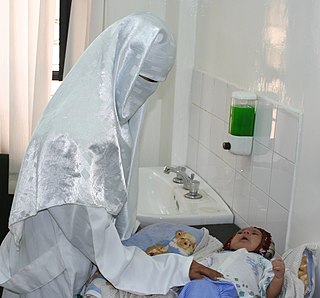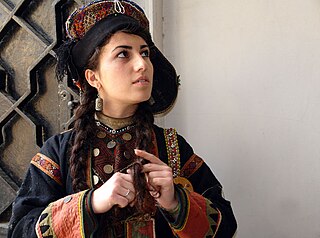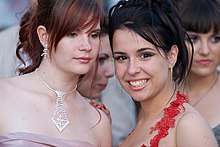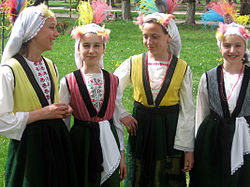
Women's rights are the rights and entitlements claimed for women and girls worldwide. They formed the basis for the women's rights movement in the 19th century and the feminist movements during the 20th and 21st centuries. In some countries, these rights are institutionalized or supported by law, local custom, and behavior, whereas in others, they are ignored and suppressed. They differ from broader notions of human rights through claims of an inherent historical and traditional bias against the exercise of rights by women and girls, in favor of men and boys.
Equal pay for equal work is the concept of labour rights that individuals in the same workplace be given equal pay. It is most commonly used in the context of sexual discrimination, in relation to the gender pay gap. Equal pay relates to the full range of payments and benefits, including basic pay, non-salary payments, bonuses and allowances. Some countries have moved faster than others in addressing equal pay.
Gender equality, also known as sexual equality or equality of the sexes, is the state of equal ease of access to resources and opportunities regardless of gender, including economic participation and decision-making; and the state of valuing different behaviors, aspirations and needs equally, regardless of gender.

The Convention on the Elimination of all Forms of Discrimination Against Women (CEDAW) is an international treaty adopted in 1979 by the United Nations General Assembly. Described as an international bill of rights for women, it was instituted on 3 September 1981 and has been ratified by 189 states. Over fifty countries that have ratified the convention have done so subject to certain declarations, reservations, and objections, including 38 countries who rejected the enforcement article 29, which addresses means of settlement for disputes concerning the interpretation or application of the convention. Australia's declaration noted the limitations on central government power resulting from its federal constitutional system. The United States and Palau have signed, but not ratified the treaty. The Holy See, Iran, Somalia, Sudan, and Tonga are not signatories to CEDAW.

Anti-discrimination law or non-discrimination law refers to legislation designed to prevent discrimination against particular groups of people; these groups are often referred to as protected groups or protected classes. Anti-discrimination laws vary by jurisdiction with regard to the types of discrimination that are prohibited, and also the groups that are protected by that legislation. Commonly, these types of legislation are designed to prevent discrimination in employment, housing, education, and other areas of social life, such as public accommodations. Anti-discrimination law may include protections for groups based on sex, age, race, ethnicity, nationality, disability, mental illness or ability, sexual orientation, gender, gender identity/expression, sex characteristics, religion, creed, or individual political opinions.

The roles of women in Hungary have changed significantly over the past 200 years. Historically, in the present day territory of Hungary, discourses on women’s roles, rights, and political access, along with feminist movements, have developed within the context of extremely traditional gender roles that were influenced by Roman Catholicism, Lutheranism and Calvinism. More recently, the Communist doctrine on women’s place in society was also influential. The post-communist era in Hungary has produced a number of organizations to address the needs of the nation’s women and mobilize female voters, and several universities now have gender studies programs. In the 21st century, the entry in the European Union has led to a more 'Westernized' culture.

Women in Kyrgyzstan traditionally had assigned roles, although only the religious elite sequestered women as was done in other Muslim societies. Rural inhabitants continue the traditional Siberian tribal practice of bride kidnapping. Bride kidnapping, known as ala kachuu, girls as young as 12 years old are kidnapped for forced marriage, by being captured and carried away by groups of men or even relatives who, through violence or deception, take the girl to the abductor's family who forces and coerces the young woman to accept the illegal marriage. In most cases, the young woman is raped immediately in the name of marriage.[8]

The status of women in North Korea is not fully understood outside the country, due to the political isolation of North Korea, the unwillingness of the North Korean authorities to allow foreign investigators access in the country, and the existence of conflicting reports. The official position of the North Korean government is that women have equal rights with men.

The status of women in Taiwan has been based on and affected by the traditional patriarchal views and social structure within Taiwanese society, which put women in a subordinate position to men, although the legal status of Taiwanese women has improved in recent years, particularly during the past two decades when the family law underwent several amendments.

Lesbian, gay, bisexual, and transgender (LGBT) persons in the Marshall Islands may face legal challenges not experienced by non-LGBT residents. Same-sex sexual activity has been legal in the Marshall Islands since 2005, and discrimination on the basis of sexual orientation and gender identity has been outlawed in all areas since 2019. Despite this, households headed by same-sex couples are not eligible for the same legal protections available to opposite-sex married couples, as same-sex marriage and civil unions are not recognized.

Women in Yemen have historically been placed at a disadvantage due to their gender, with a highly patriarchal society. Although the government of Yemen has made efforts that will improve the rights of women in Yemen, many cultural and religious norms, along with poor enforcement of this legislation from the Yemeni government, have prevented Yemeni women from having equal rights to men.
The feminist movement has affected change in Western society, including women's suffrage; greater access to education; more equitable pay with men; the right to initiate divorce proceedings; the right of women to make individual decisions regarding pregnancy ; and the right to own property.

Gender inequality can be found in various areas of Salvadoran life such as employment, health, education, political participation, and family life. Although women in El Salvador enjoy equal protection under the law, they are often at a disadvantage relative to their male counterparts. In the area of politics, women have the same rights as men, but the percentage of women in office compared to men is low. Though much progress has been made since the Salvadoran Civil War ended in 1992, women in El Salvador still face gender inequality.

Women in Georgia live in a society which has been changing over the centuries, where, after decades of Soviet regime, from the 1990s onwards, the culture has seen rapid social changes and new emerging values, but has also been affected by economic instability.

The character of Polish women is shaped by Poland's history, culture, and politics. Poland has a long history of feminist activism, and was one of the first nations in Europe to enact women's suffrage. It is also strongly influenced by the conservative social views of the Catholic Church.

The first women's association in Albania was founded in 1909. Albanian women from the northern Gheg region resided within a conservative and patriarchal society. In such a traditional society, the women had subordinate roles in Gheg communities that believe in "male predominance". This is despite the arrival of democracy and the adoption of a free market economy in Albania, after the period under the communist Party of Labour. Traditional Gheg Albanian culture was based on the 500-year-old Kanun of Lekë Dukagjini, a traditional Gheg code of conduct, where the main role of women was to take care of the children and to take care of the home.
Gender equality is the notion that each gender should receive equal treatment in all aspects of life, and that one should not be discriminated based on their sex. Gender equality is a human right, which is recognised under the United Nations Universal Declaration of Human Rights.

Changes in gender roles in Central and Eastern Europe after the fall of Communism have been an object of historical and sociological study.
The Committee of the Bulgarian Women's Movement (CBWM) (1968–1990) was a government-affiliated organization in Bulgaria that aimed to improve women's participation in the labor force, decrease the declining birth rate, and promote gender equality during the Bulgarian socialist era. It accomplished these goals by advocating for women's rights, redefining gender roles, and securing state support for women's issues. Notable accomplishments include maternity leave and abortion rights and a program of social engineering to encourage men to take a more active role in child-rearing and homemaking activities. The CBWM played a prominent role in securing development aid for struggling economies in Africa and trained female leaders in Bulgaria to help feminist activists from Zambia. The committee has been recently recognized by scholars for its acute impacts of women's rights at the international level, with many progressive policies emerging directly from the committee's initiatives and influences. The CBWM was dissolved in 1990 after the fall of communism in Bulgaria.
















